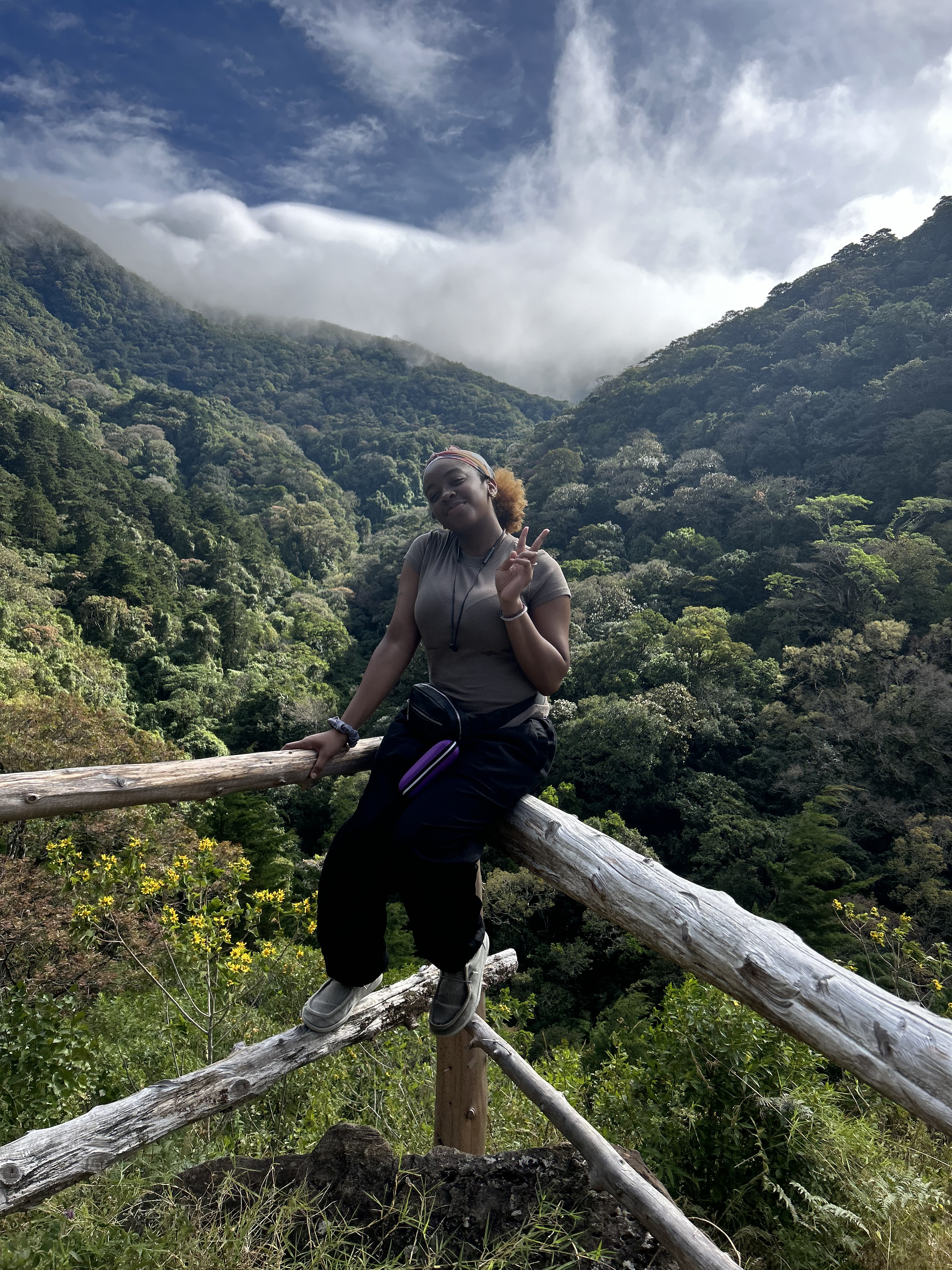Jessica Watley is a first year student within RCAH pursuing a humanities pathway, with a double major in environmental studies and management.
Part of my fall 2023 class, RCAH 203 Transcultural Relations through the Ages: Design Justice, was a trip to Costa Rica.
The duration of our class time in East Lansing was planning for our upcoming trip abroad. It was then that we came up with our theme for the trip: “How can we use the connection to nature, along with arts and culture, to motivate opportunity and a sense of identity to the youth in Palmichal?”
We left for Costa Rica a week before Christmas. Upon arrival, the nine of us toured San Jose briefly, then headed up the mountains to Palmichal and the reserve, riding in on the van that became our only transportation for the week. The area is surrounded by mountains, with beautiful landscapes to explore.
During our week there, we collected data from the Palmichal youth and senior community members to determine exactly how we could answer our semester’s theme and help bring “a sense of identity to the youth in Palmichal.” This process, I learned in the course, is known as “design thinking.” For us, design thinking involved talking with elder members of the community about their hopes and wishes for the youth and, more importantly, collaborating on workshops with local young people themselves about what they felt they needed.
A key part of our work on the ground in Costa Rica was supporting the various activities that resulted from ideas of the Palmichal youth. They cited connection and self-esteem issues as problems for their age demographic, and it was our job to work together to design sustainable structures that support their mental health. For example, we used grant money we were given to construct a community engagement center that would function as a nonprofit organization to develop young people’s potential and support their interpersonal relationships.
Our efforts in Palmichal were focused on creating a culture that might nip some of the brain-drain in the bud to stem the loss that occurs when older teens feel the need to move away. Often, these teens leave the region for the hope of better lives and often never return. But in addition to preservation, the town has a new focus on fostering community cohesion, and maintaining the local environment.
As a result of that, this trip made me aware of aspects of myself I didn't even know were dormant. You can connect with Mother Nature and your humanity through this experience, which helps you find a newfound feeling of peace that comes with immersing yourself in another culture. The relationships I made with my classmates, the founders and families of the reserve, and the lifelong bonds with the youth of Palmichal are something I will never forget.
Along with this crucial community engagement work, we were in Costa Rica–where the national catchphrase is “Pura Vida.” So, of course, there was play. The group and I went on restorative hikes, took tours of the land, visited beaches, and spent plenty of time in what I’m sure is the clearest water I’ll ever see.
“Pura Vida,” to Costa Ricans, is about living well and enjoying life, which essentially means having fun. The way they live life with their balance of work and play is inspirational.
Throughout all of our journeys in Costa Rica, the biggest lesson I took away was that of community. Through the design thinking process, I learned that engagement with community can take a particularly personal form of leadership. In Costa Rica, working in collaboration with such amazing individuals, I realized that community engagement is what my heart is in. The passion that connecting with anyone through nature brings me is incomparable. To me, that is the true definition of community engagement: raw connection through any medium.
That is "Pura Vida" — what Costa Rica is all about.
This Student View was adapted from a story originally posted to the Residential College in the Arts and Humanities website.
